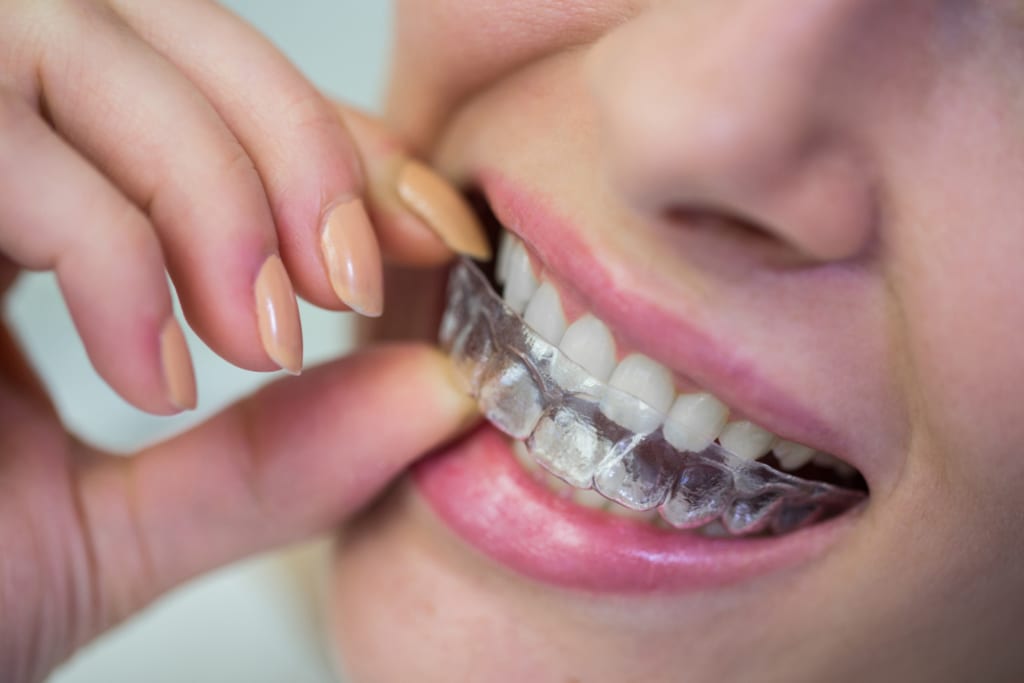Common Dental Issues That Invisalign Can Fix
Invisalign

A confident smile goes a long way toward making many of us feel good. However, having misaligned teeth can prevent us from proudly showing our whites. Invisalign may be the ideal option if you're searching for a braces-free method to straighten your teeth! Using clear aligners, this cutting-edge procedure gradually realigns your teeth to their ideal placements. What precisely can Invisalign treat, though? Let's understand what is Invisalign and examine the typical dental issues that this ground-breaking procedure can resolve.
Common Dental Problems Invisalign Can Correct
- The cutting-edge clear aligners from Invisalign are surprisingly adaptable in addition to being discrete! With this procedure, a variety of misalignment problems can be resolved, giving you a straighter, healthier smile. Now let's look at some of the most prevalent dental issues that Invisalign can successfully treat:
1. Misaligned Teeth: Ever feel like your teeth just don't seem to fit together quite right? Misaligned teeth are a common problem that can affect your bite and even make chewing uncomfortable. Invisalign's custom-made aligners apply gentle, continuous pressure to gradually move your teeth into their ideal positions, creating a more balanced and functional smile.
2. Crowded or Crooked Teeth: Crowding or crooked teeth can not only impact your smile's aesthetics but also make it harder to clean your teeth properly, increasing the risk of cavities and gum disease. Invisalign's clear aligners are designed to address both crowding and misalignment. By strategically applying pressure, Invisalign can create space for teeth to shift into their correct positions, resulting in a straighter, more even smile.
3. Baby and Permanent Teeth: Sometimes, baby teeth can leave behind unwanted gaps when permanent teeth erupt. Invisalign can be a great option for teenagers or young adults experiencing this issue. The clear aligners can gently guide permanent teeth into their proper positions, closing gaps and creating a more uniform smile.
4. Overbite and Underbite: An overbite occurs when your upper front teeth protrude over your lower teeth, while an underbite is the opposite. Both can cause bite problems, jaw pain, and difficulty chewing. Traditional braces have proven effective in correcting these problems, but Invisalign offers a discreet alternative. Can invisalign fix overbite? Invisalign's clear aligners are designed to apply controlled pressure on specific teeth. In the case of overbites, the aligners can gently move the upper front teeth back, while for underbites, they can encourage the lower jaw to shift backward. This gradual, controlled movement helps achieve proper jaw alignment, improving your bite function, reducing strain on your jaw muscles, and ultimately contributing to better overall oral health.
5. Crossbite and Open Bite: A crossbite happens when your upper and lower teeth don't meet properly when you bite down. An open bite occurs when your upper and lower teeth don't touch at all when you close your mouth. Both can lead to speech difficulties and uneven tooth wear. Invisalign's customized aligners can effectively address these issues by precisely shifting your teeth into their ideal positions, promoting a healthy bite and improved function.
6. Teeth Gaps: Teeth gaps, can be caused by a variety of factors, including genetics, missing teeth, or tongue thrusting habits. These gaps can not only affect your confidence in your smile but might also make it harder to floss effectively, potentially increasing your risk of gum disease.Unwanted gaps between your teeth can be a cosmetic concern for many people. Invisalign's clear aligners can be programmed to close these gaps by gradually moving your teeth closer together. The custom-made trays ensure controlled movement, resulting in a beautiful, gap-free smile.
Conclusion
Is Invisalign worth it? Yes, many orthodontic issues can be discreetly and comfortably resolved with Invisalign. With Invisalign, you may be able to have a healthier, straighter smile without having to deal with the inconveniences of traditional braces. Nonetheless, it's crucial to speak with a qualified orthodontist to find out if Invisalign is the best course of action for your particular requirements. To help you attain your ideal smile, they can evaluate your particular circumstances and design a customized treatment plan.
About the Creator
Nimesh Patel
Dentist and owner of Vail Orthodontics. Visit: https://vailorthodontics.com/
Enjoyed the story? Support the Creator.
Subscribe for free to receive all their stories in your feed. You could also pledge your support or give them a one-off tip, letting them know you appreciate their work.





Comments
There are no comments for this story
Be the first to respond and start the conversation.